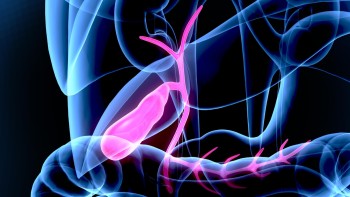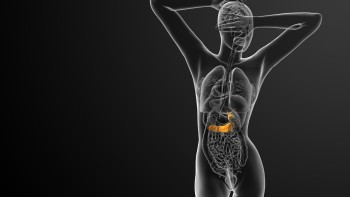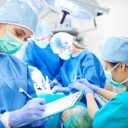Gallbladder Removal Diet: What to eat and avoid

- What is the gallbladder?
- What happens after cholecystectomy (gallbladder removal)?
- What are general tips after gallbladder removal?
- What can you eat after gallbladder surgery?
- What are the recommended foods?
- What are the prohibited or very limited foods?
- After a cholecystectomy, it is important to follow a strict diet and eating habits during the first weeks to avoid complications.
- One of the main recommendations, practically an obligation, is to limit the consumption of fats in the diet, since the body needs time to recover.
- Practically all patients can return to their usual diet after a month, month and a half after cholecystectomy.
What is the gallbladder?
The gallbladder is a muscular sac, a small pear-shaped organ, which is located just below the liver on the right side of the abdomen. It collects and stores bile, a yellow-green liquid produced by the liver that is essential for the digestion of fats. This is the reason why the gallbladder is an important organ of the digestive system.
The gallbladder and bile play an important role in the digestion of fats, although bile does not contain digestive enzymes.
Cholecystectomy is the surgical removal gallbladder surgery.

How are fats digested and what are they? What paper does the gallbladder have?
Next, we are going to explain step by step the fat digestion process. At some times it may seem complicated, for this reason, and so that you can know it in order to understand the diet to follow and some foods to avoid, we are going to try to explain it to you in the simplest way possible.
- Fat digestion begins when chyme (a mixture of partially digested food and gastric juices) passes from the stomach into the first part of the small intestine or duodenum.
Digestion requires specific enzymes and other secretions. Bile is produced in the liver and accumulates in the gallbladder until it is required. Bile helps with the digestion of fats and other lipids, although it does not contain digestive enzymes.
- When the chyme reaches the duodenum, a hormone called cholecystokinin stimulates the contraction of the smooth muscles in the walls of the gallbladder and the release of bile into the common bile duct. Bile enters the duodenum.
- The pancreas, a gland located below the stomach on the left side of the abdomen, produces a variety of digestive enzymes, including lipases, essential enzymes in the digestion of fats.

Do you need gallbladder surgery?
Request a free and immediate appointment with our specialists
Fats are hydrophobic molecules, that is, not soluble in water. However, many enzymes, including lipases, are water-soluble and require an aqueous medium to function.
- Fat molecules attract each other, forming aggregates in the form of globules or droplets. This arrangement does not favor the action of digestive enzymes, since it offers a small surface area exposed to enzymes solubilized in the aqueous medium.
- Bile works as an emulsifier, the molecules that make up bile have a hydrophobic region that is associated by penetrating the fat drop, and a hydrophilic region that is oriented towards the aqueous medium. The resulting hydrophilic coating prevents the addition of fat droplets. The small fat droplets resulting from the action of bile are called micelles. With the formation of these small droplets the surface area increases and the fats will be more exposed to the effect of digestive enzymes.
- Once stabilized in micelles, fats are attacked by lipases produced by the pancreas. Lipases break down fats into fatty acids and monoglycerides. As these products are fat-soluble, they can easily cross the plasma membrane of the epithelial cells of the intestinal mucosa.
What happens after cholecystectomy (gallbladder removal)?
After the removal of the gallbladder through a cholecystectomy, the body is temporarily left without an adequate reserve of bile to be able to digest fatty foods normally, so it is important to avoid excessive fat consumption after a cholecystectomy, at least during the first weeks.
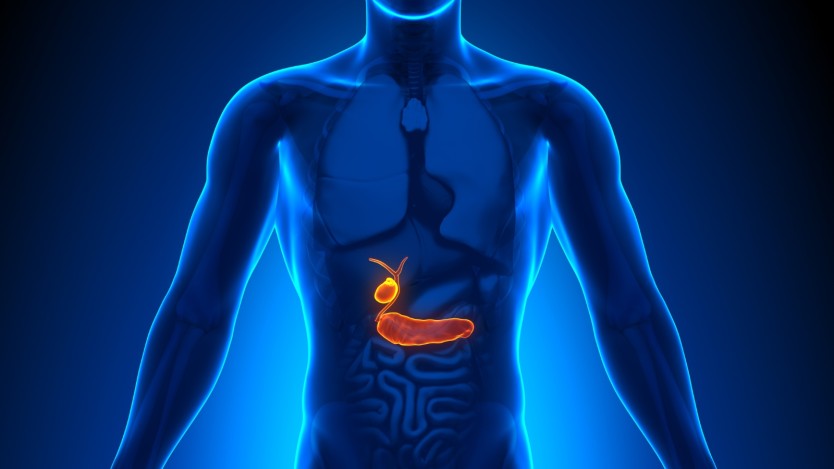
If during this period you eat fatty foods, you will surely present problems such as:
- Nausea
- Vomiting
- Colics
- Swelling
- gases
- diarrhea
When can you eat everything again?
This period is transitory and short-lived since the body quickly compensates for the loss of bile reserve, and can last around 2 to 3 weeks. Later you will be able to return to your usual diet, progressively incorporating fatty foods, reaching eating normally at the end of the 3rd year. – 4th week after cholecystectomy.
Keep in mind that recovery times vary from one patient to another, so as the guidelines to follow that the specialist tells you, for this reason, and to make sure when you can eat everything again, you should consult with your doctor.
What are general tips after gallbladder removal?
The first step in the diet plan after gallbladder removal is to eat smaller meals 5 or 6 times a day and avoid a high-fat diet.
The intake of saturated fats should be limited. Food should be prepared by steaming or baking.
The amount of calories provided by fat should be limited to less than 30% of total calories. General advice after a cholecystectomy is:
- Eating slowly and chewing food well is always important, not just after a surgical intervention.
- It is important to never fill up, just eat little until you feel full. Eat 5 or 6 times a day.
- Avoid fats in all their forms (fried foods, stews, grills, creams, full-fat dairy products) during the first three weeks after surgery.
- Avoid foods with excessive seasonings, which cause gas and constipation.
- Gradually increase the amount of fiber in your diet. This can help normalize your bowel movements and stop diarrhea if it occurs.
- It is recommended to always walk after eating for at least 5 to 10 minutes since physical exercise helps with digestion.
- Avoid intense physical efforts, but do deep breathing exercises: 10 times in the morning, afternoon and evening.
- Observe your body. You can gradually test your tolerance to different foods. Don't try them all at once, start one at a time and a week apart. This way you will ensure that the tolerance is real.

Do you need gallbladder surgery?
Request a free and immediate appointment with our specialists
What can you eat after gallbladder surgery?
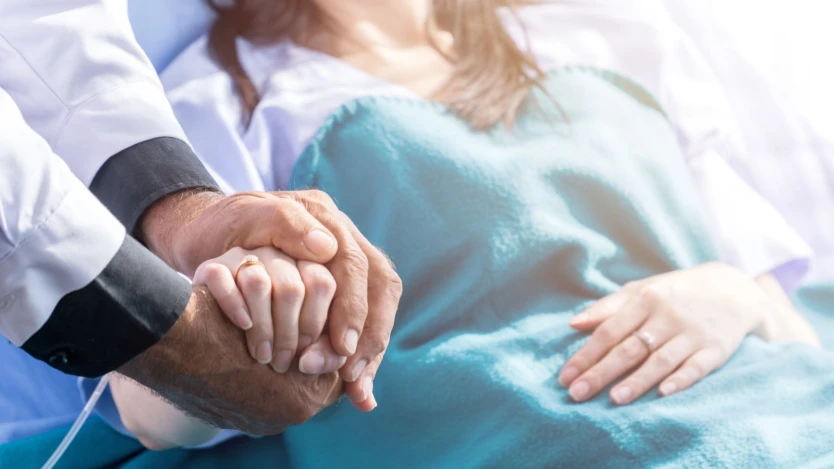
The postoperative diet, that is, the one you should follow immediately after gallbladder surgery, is usually the following:
- At 24 hours: start of liquid intake .
- At 48 hours: low-fat bile semi-liquid diet as tolerated.
- At 72 hours: soft diet is recommended.
- The continuation diet: is a soft biliary diet that, if tolerance is good, will be followed. with this in moderate volumes.
What are the recommended foods?
In general, foods with low fat content are the most recommended right after cholecystectomy. But not all fats are equally poorly tolerated. Those of plant origin are better accepted. The fried ones worse. Chocolate is very poorly tolerated like this. as, flatulent foods.
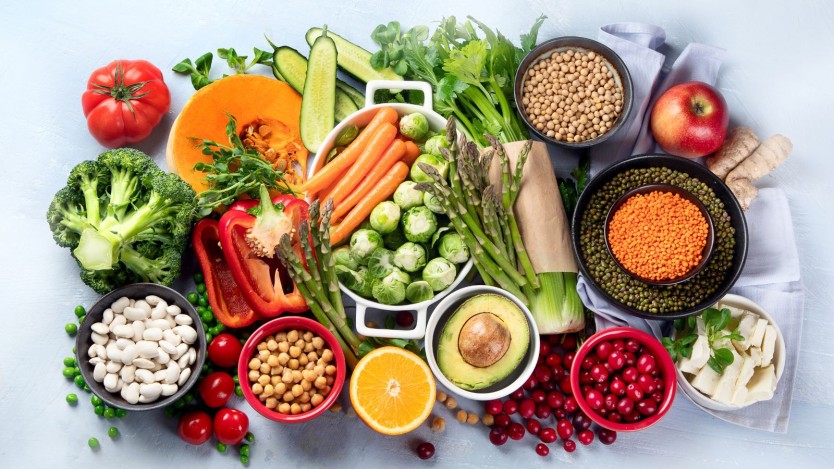
- Hot and mild tea infusions and chamomile
- Skim milk, skim cheese, skim yogurt
- Rice, pasta, bread, cookies (María type)
- Legumes in moderate portions without skin
- Boiled fruits, baked fruits, syrups, raw, except flatulent fruits
- Vegetables and salads: All, except those that are flatulent or those that are difficult to digest (raw pepper, cucumber, onion and others)
- Lean meats, cooked ham, not fatty
- Lean or white fish
- Fatty foods: raw or boiled oil, olive oil or seeds
Cooking guidelines for recommended foods after cholecystectomy
- It is advisable to prepare dishes with little added fat, without frying.
- Do not heat fat above 100°C.
- Raw, boiled, grilled, steamed, and papillote dishes are more suitable after the intervention.
What are the prohibited or very limited foods?
- Chocolate
- Fatty meats: lamb, pork
- Fatty parts of other meats (e.g. beef rib)
- Sausages
- Eggs, especially the yolk due to the high fat content
- Bluefish, shellfish
- Whole milk, butter, cream
- Cabbage, cauliflower, pepper turnips, radishes, garlic
- Legumes
- Sauces, spices, spicy
- Raw apple, melon, watermelon
- Cream, custard
- Oleaginous fruits: olives, walnuts, hazelnuts, almonds
- Oil or butter for frying or cooking
- Flatulent foods such as legumes, cabbage, cauliflower, Brussels sprouts, artichokes, turnips, raw onion
The body adapts easily to changes, in the end you will recover your lifestyle to which you are accustomed.
The modifications will be temporary but it is important to follow them to avoid causing damage in your digestive system and so encourage faster recovery.
95% of people who have had gallbladder surgery can return to their normal diet in a short time.

Do you need gallbladder surgery?
Request a free appointment without waiting with one of our specialists
Medical disclaimer: All the published content in Operarme is intended to disseminate reliable medical information to the general public, and is reviewed by healthcare professionals. In any case should this information be used to perform a diagnosis, indicate a treatment, or replace the medical assessment of a professional in a face to face consultation. Find more information in the links below:
